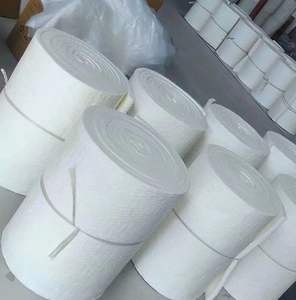Discover Premium Ceramic Products | Durability & Elegance United | Advanced Ceramics
1. Introduction
Just 24 hours ago, a major foundry in Ohio reported a 30% reduction in crucible-related downtime after switching to properly preheated silicon carbide crucibles—highlighting how critical correct usage is in industrial settings. Whether you’re melting metals, firing ceramics, or conducting lab experiments, your silicon carbide crucible is only as reliable as your handling technique.

Silicon carbide crucibles are prized for their exceptional thermal conductivity, resistance to thermal shock, and ability to withstand temperatures over 1600°C. But misuse can lead to premature failure. This guide gives you clear, actionable steps to get the most out of your crucible—safely and efficiently.
2. Understanding Your Silicon Carbide Crucible
A silicon carbide crucible is made from high-purity silicon carbide (SiC), often reinforced with binders like silicon nitride or oxide phases. Unlike traditional clay-graphite crucibles, SiC versions offer faster heating, better chemical inertness, and longer service life.
Don’t confuse it with a silicon nitride crucible—though both are advanced ceramics, silicon nitride offers higher fracture toughness but lower thermal conductivity. For most melting applications, silicon carbide remains the go-to choice.
You’ll also encounter related products like silicon carbide ceramic tiles, rbsic silicon carbide tile blocks, silicon carbide rings, and even silicon carbide burner nozzles—all leveraging the same core material properties for high-heat environments.
3. Step-by-Step Guide to Using a Silicon Carbide Crucible
3.1. Preheating Properly
Never place a cold silicon carbide crucible directly into a hot furnace. Thermal shock is the #1 cause of cracking.
- Start at 150–200°C for 30 minutes to drive off moisture.
- Gradually ramp to 600°C over 1–2 hours.
- Hold at 600°C for 30–60 minutes before reaching your operating temperature.
This slow ramp prevents internal stress and extends crucible life significantly.
3.2. Loading and Melting
Use clean, dry charge materials. Moisture or contaminants can cause spalling or gas pockets.

Avoid overfilling—leave at least 1–2 inches of headspace to prevent spills during melting.
Stir gently with a compatible tool (e.g., graphite or SiC rod). Aggressive stirring can erode the crucible walls.
3.3. Cooling Down
After use, allow the crucible to cool slowly inside the furnace if possible.
Rapid cooling in air or water can cause microcracks that worsen with each cycle.
4. Common Problems and How to Fix Them
4.1. Cracking or Spalling
Usually caused by thermal shock or mechanical impact. Always preheat properly and handle with ceramic-safe tongs.
If minor surface cracks appear, monitor closely—but deep cracks mean it’s time to replace the crucible.
4.2. Glazing or Buildup
Repeated use with certain metals (like aluminum or zinc) can leave residues that fuse to the surface.
Clean gently with a soft brush or non-metallic scraper. Avoid acid washes unless specified by the manufacturer.

4.3. Reduced Lifespan
Using the crucible beyond its rated temperature or with incompatible chemicals (e.g., strong alkalis) accelerates wear.
Match your crucible grade to your application—some are optimized for non-ferrous metals, others for lab use.
5. Maintenance and Storage Tips
Store your silicon carbide crucible in a dry, room-temperature environment.
Keep it off concrete floors (which retain moisture) and away from humidity.
Inspect before each use for hairline cracks, chips, or discoloration.
Never stack crucibles—this can cause chipping or stress fractures.
6. When to Choose Alternatives
While silicon carbide excels in most high-temp scenarios, consider silicon nitride ceramics for applications needing extreme mechanical strength—like custom silicon nitride heat shields or silicon nitride plates in aerospace.
For comparison: boron carbide vs silicon carbide? Boron carbide is harder but more brittle and expensive—better for armor, not crucibles.
And while you might see silicon carbide used in consumer goods like silicon carbide ceramic baking dishes or dinner plates, industrial crucibles require much higher purity and density.
7. Conclusion
A silicon carbide crucible is a powerful tool—but only if treated with care. By following proper preheating, loading, cooling, and storage protocols, you can dramatically extend its life and ensure consistent, safe performance.
Whether you’re in a foundry, lab, or small workshop, these simple steps prevent costly failures and keep your operations running smoothly. Remember: respect the heat, and your crucible will respect you back.
Our Website founded on October 17, 2012, is a high-tech enterprise committed to the research and development, production, processing, sales and technical services of ceramic relative materials such as How. Our products includes but not limited to Boron Carbide Ceramic Products, Boron Nitride Ceramic Products, Silicon Carbide Ceramic Products, Silicon Nitride Ceramic Products, Zirconium Dioxide Ceramic Products, etc. If you are interested, please feel free to contact us.
